The Symbol of Love Twin Temple of Plaosan
Date, 2022-12-

The first stop on our 9-day Java Island tour was the city of Yogyakarta. Yogyakarta is the capital city of the Special Region of Yogyakarta in Indonesia, in the south-central part of the island of Java. Yogyakarta is the only Indonesian city still ruled by a monarchy and is the home of Indonesia’s most powerful sultan. It is considered the cultural heart of Java, well-known for drama and dance festivals, and its handicraft industry. Yogyakarta, together with its twin city Surakarta (Solo), is regarded as the cradle of civilization on Java. Nearby, are the magnificent temples of Borobudur and Prambanan, and more.

The three temples we visited on our 9-day Java Island road trip, Plaosan, Prambanan and Borobudur. The first was the Plaosan temple complex in the morning, followed by the Prambanan temple complex in the afternoon.
On day one of our stay in Yogyakarta, we visited the Plaosan Temple Complex. The temple complex is located in the Bugisan subdistrict, Prambanan District, Klaten Regency, Central Java Province, Indonesia. The Plaosan temple complex consists of two groups: Plaosan Lor (North Plaosan) and Plaosan Kidul (South Plaosan), separated by about 50 meters by a road. This has been my first visit ever.
If The Taj Mahal celebrates the great love of India's Mughal ruler, Shah Jahan for his beloved wife, Mumtaz Mahal, then the Plaosan Temple is a proof of the power of love between two people of different beliefs. The love story between Pramodhawardani, the daughter of a buddisht King, Samarattungga marrying a Hindu King, Rakai Pikatan.
Plaosan Temple, which is a Buddhist temple, is estimated by experts to have been built during the reign of Rakai Pikatan from the Hindu Mataram Kingdom, namely in the mid-9th century AD. One expert who supports this opinion is Prof. J. G. de Casparis, a Dutch orientalist, and Indologist who adheres to the contents of the Sri Kahulunan Inscription (842 M). The inscription states that Plaosan Lor Temple was built by Queen Sri Kahulunan, with the support of her husband. According to de Casparis, Sri Kahulunan is the title of Pramodhawardani, the daughter of King Samarattungga from the Syailendra dynasty. The Princess, who embraced Buddhism, married Rakai Pikatan from the Sanjaya dynasty, who embraced Hinduism.
THE PLAOSAN LOR COMPLEX (NORTH)
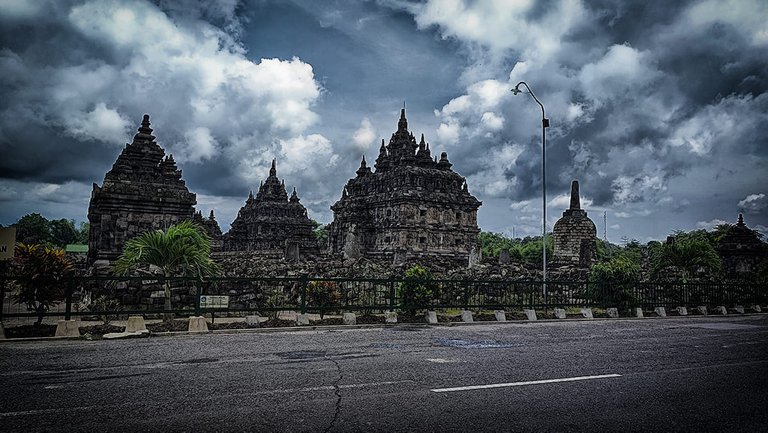
The Plaosan Lor complex main gate view from across the street where the Plaosan Kidul complex lies.

As soon as you enter the Plaosan Lor complex's main gate, you will see piles of temple stones that are part of the ancillary temple which have been identified to which temple they belong to but have been assembled and restored.
At the front, there is a guard post and a small office where visitors fill in the guest book, and pay an admission fee. As soon as you pass the main gate, you can see countless piles of temple stones in the front yard of the main temple. Imagine the complicated work that must be done to identify, select, gather and reassemble them. There are rows of ancillary temples in the Plaosan Lor complex, which had been restored. It would have been a beautiful view if all the ancillary temples had been restored.
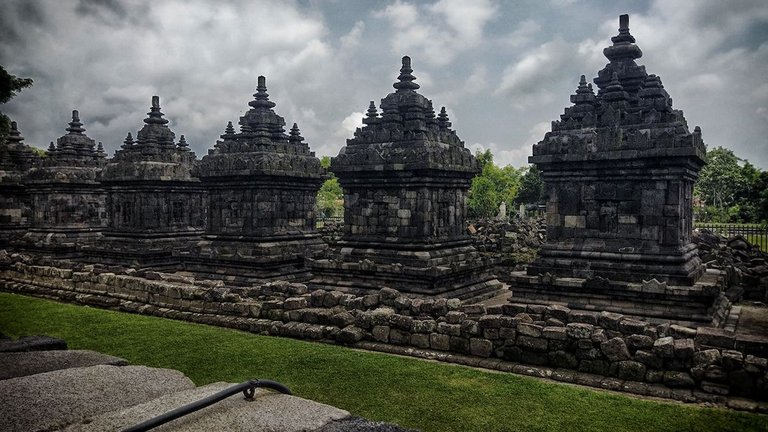
A row of ancillary temples that have been fully restored.
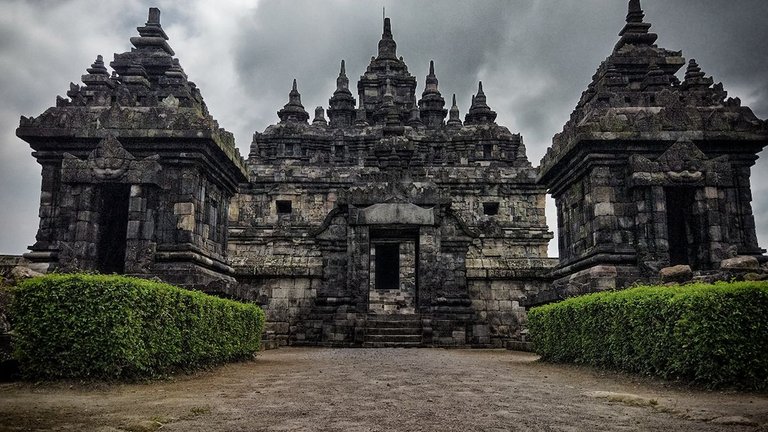
Unlike most temples and groups of temples in Central Java, whose main door faces East, Plaosan Temple faces West, which is usually found in temples in East Java.

At a glance it looks like a Hindu temple, but closer examination reveals its striking Buddhist features. In the Lor temple complex, there are two main two-level temple buildings
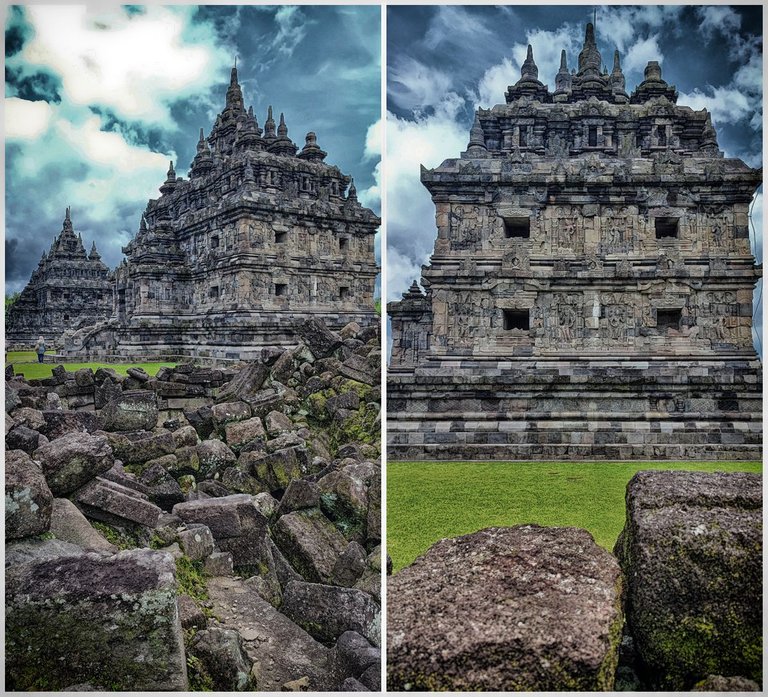
The interior of the two main temples is divided into six rooms, three of which are located below, while the other three rooms are located on the second level. The floorboards that separated the two levels are now gone, but the walls still show the grooves where the floors were installed.
The Plaosan Lor complex is more extensive and has been the subject of more research and restoration than Plaosan Kidul. The restoration of Plaosan Lor began in 1941. Its beauty and majesty are already visible. This is because the restoration of the two large and beautiful main temples, as well as several ancillary temples in the vicinity, has been completed.
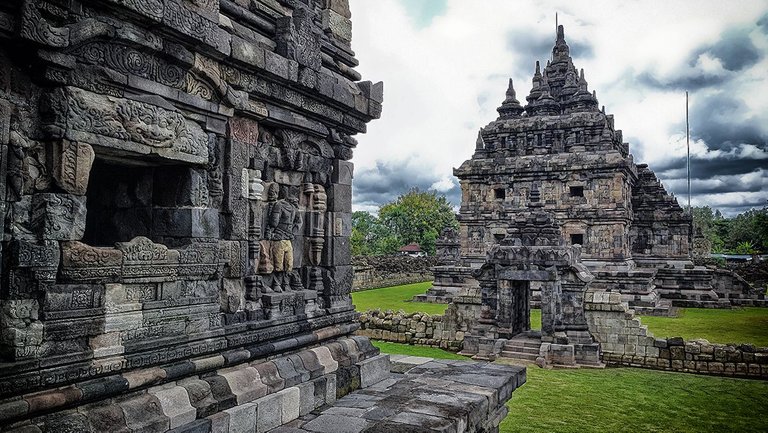
There is a gate separating the two main temples with a roof decorated with rows of small crowns. The top of the roof of the gate is square with a small crown on it.
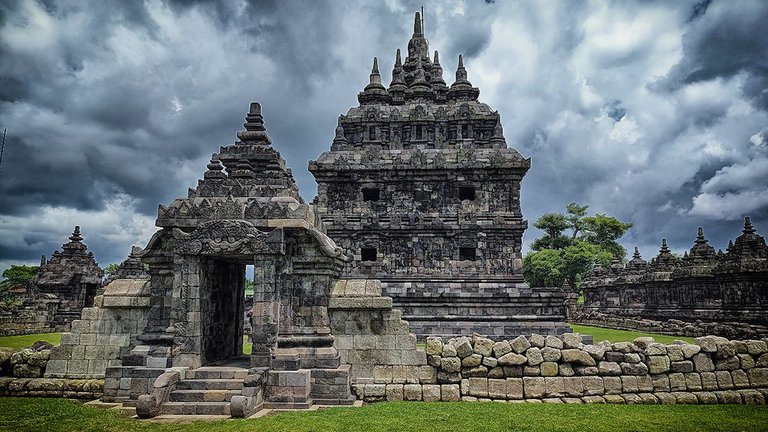
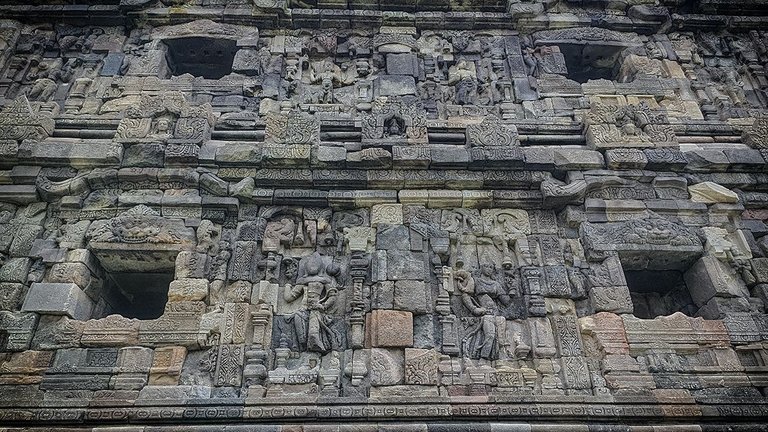
Reliefs decoration along the outer walls of the two main temples depicting men and women who are standing in size close to real human size. The relief on the south temple wall depicts men, while the north temple depicts women.
The Plaosan Lor complex has two main temples. The temple on the left is called the North Temple, with reliefs depicting female figures. The temple on the right is called the South Temple, with reliefs depicting male figures. The northern part of the complex still has an open corridor with several Buddhist statues. The two main temples are surrounded by 116 ancillary stupas and 50 ancillary temples, and an artificial moat.

Entering one of the main temples with our knowledgeable temple guide to explain and decipher the meaning behind each Buddha statue poses and reliefs on the inner walls.

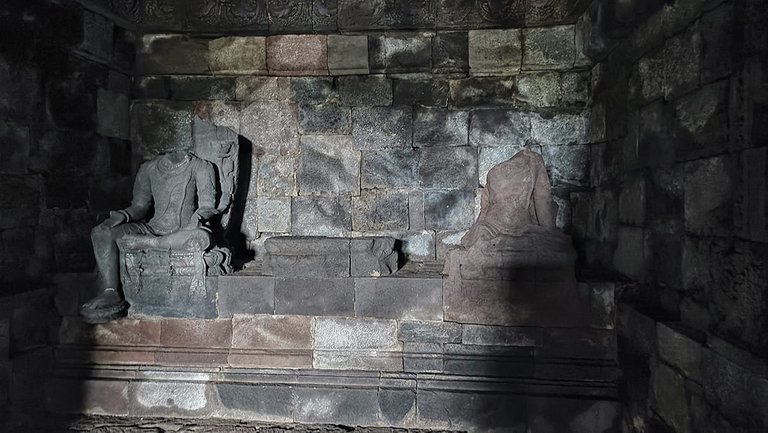
The three Buddha statues, with one missing in the middle, seated in a row on the Padmasana facing West.
THE PLAOSAN KIDUL COMPLEX (SOUTH)
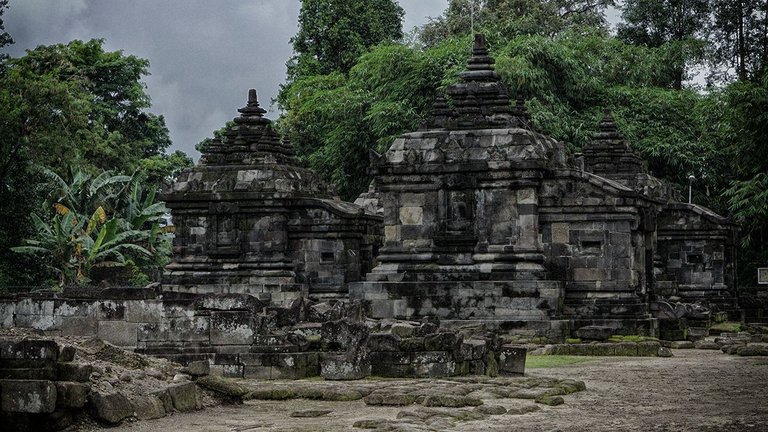
The Plaosan Kidul Temple Complex is a large open area, with no visible guard. There is a temporary building and open tents which seems being used by archaeologists and workers when they were carrying out the restoration of the temple.
Historical records state that the Plaosan Kidul complex was discovered by Ijzerman, a Dutch archaeologist, when he was conducting research in August 1909, where he found the ruins of 16 small temples.
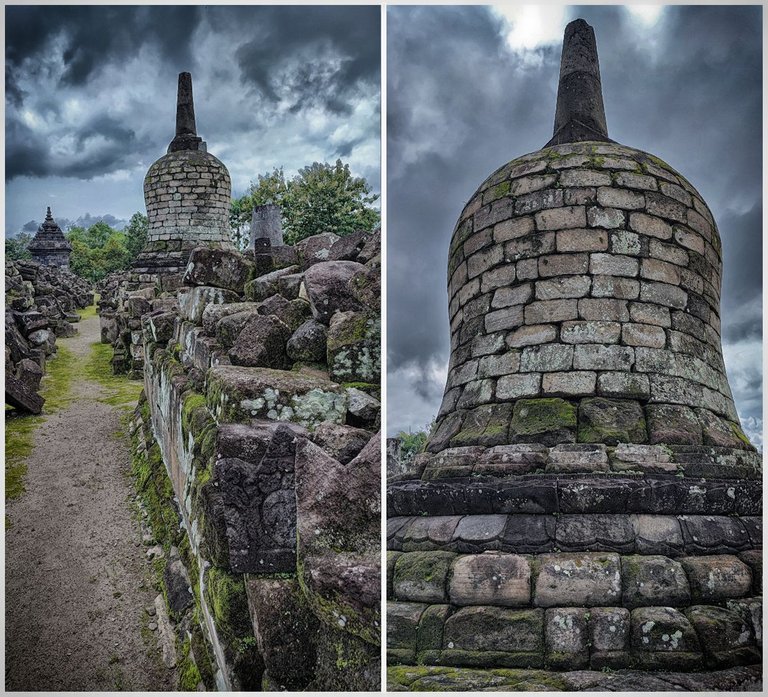
Stupa at the top of a temple in the midst of temple ruins.
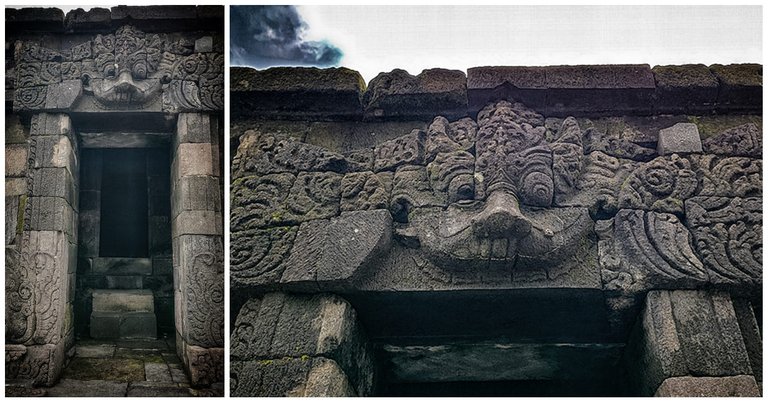
Kala Makara (Hindu) decoration on the temple door.
Plaosan Kidul Temple is a Buddhist temple, which can be seen from the small stupas at the top of the ancillary temples, on the temple door you can see the Kala Makara decoration, which is commonly found in Hindu temples. A phenomenon that is also found in several other temples, which can be an indication of harmony among its followers.
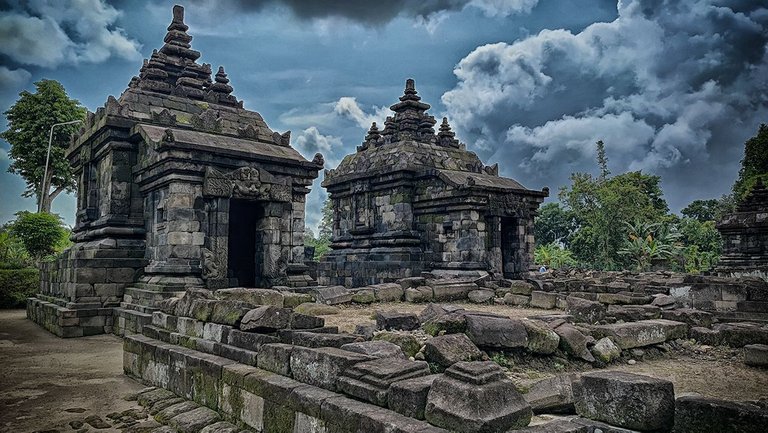
Two of six ancillary temples in the Plaosan Kidul complex have been restored, but many more ancillary temples are still in the form of piles of stones waiting for restoration work to be carried out.
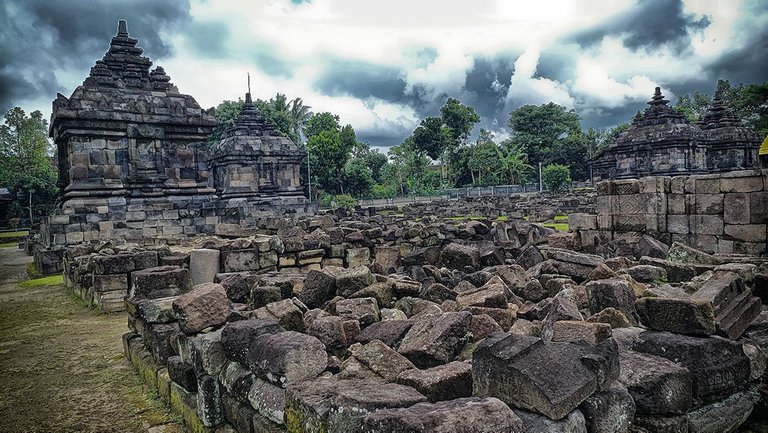
Piles of temple stones that have been identified and gathered ready to be measured and assembled. A painstaking process.
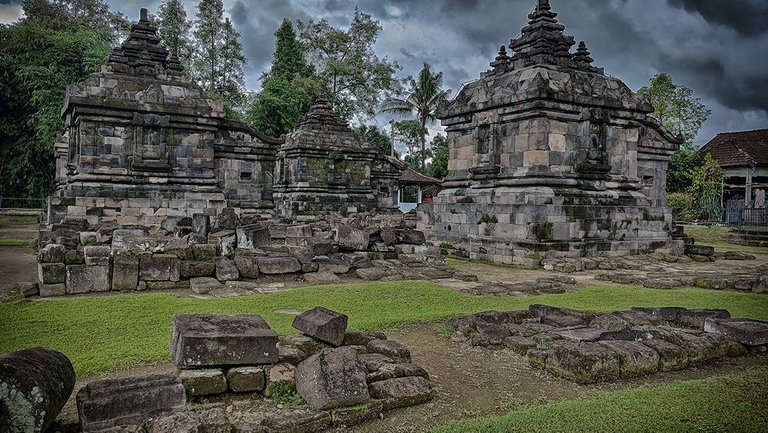
In this temple complex, there are only a few temple buildings that stand upright, and the rest is still scattered stones that are part of the temple that have not been restored. We didn't see many activities when we were there, although restoration work on the temple complex was far from complete. We didn't see any heavy machinery in the area. We only saw workers measuring stone blocks.
We spoke to one of the workers and he explained that besides the lack of funds, there are stages that needed to be completed to restore a temple, starting with searching for the stones that matched the respective temples, gathering the stones, and then assembling them – just like assembling one big jigsaw puzzle. He also told us that they have limited capability. Restoration efforts have been going on for decades, and generations, and it's not impossible that a full restoration of all of the temples will take hundreds of years.
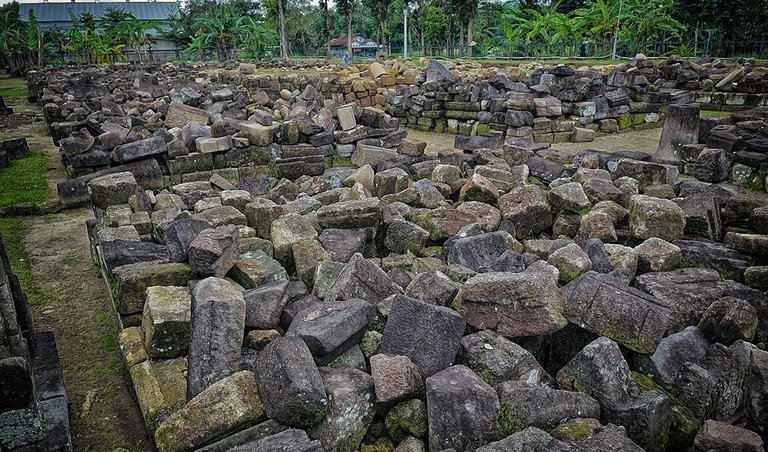
Piles and piles of temple stones. Restoring a small temple could take years. How do you assemble these stones to form a temple?
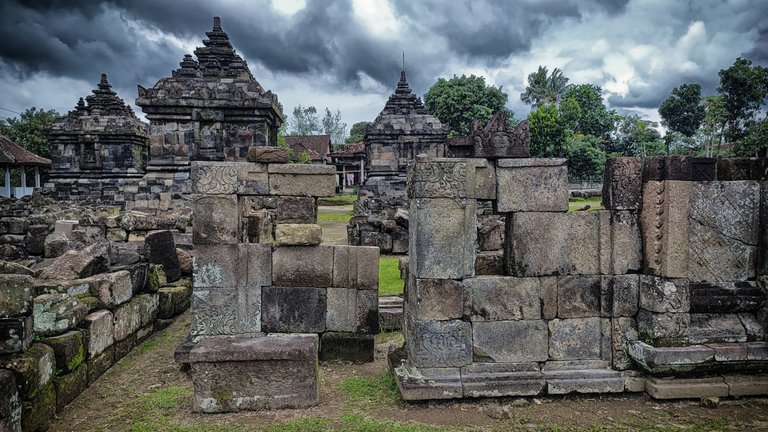
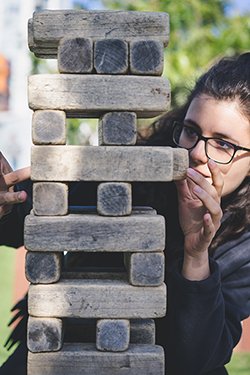
Above, photo of temple restoration in progress. The wall may look precarious and could easily collapse when pushed. Think again, unlike Jenga where you could easily slide a block/piece of wood, there's some kind of locking mechanism that will hold a stone when placed on top of another stone (picture below).
Jenga Photo by John Moeses Bauan on Unsplash
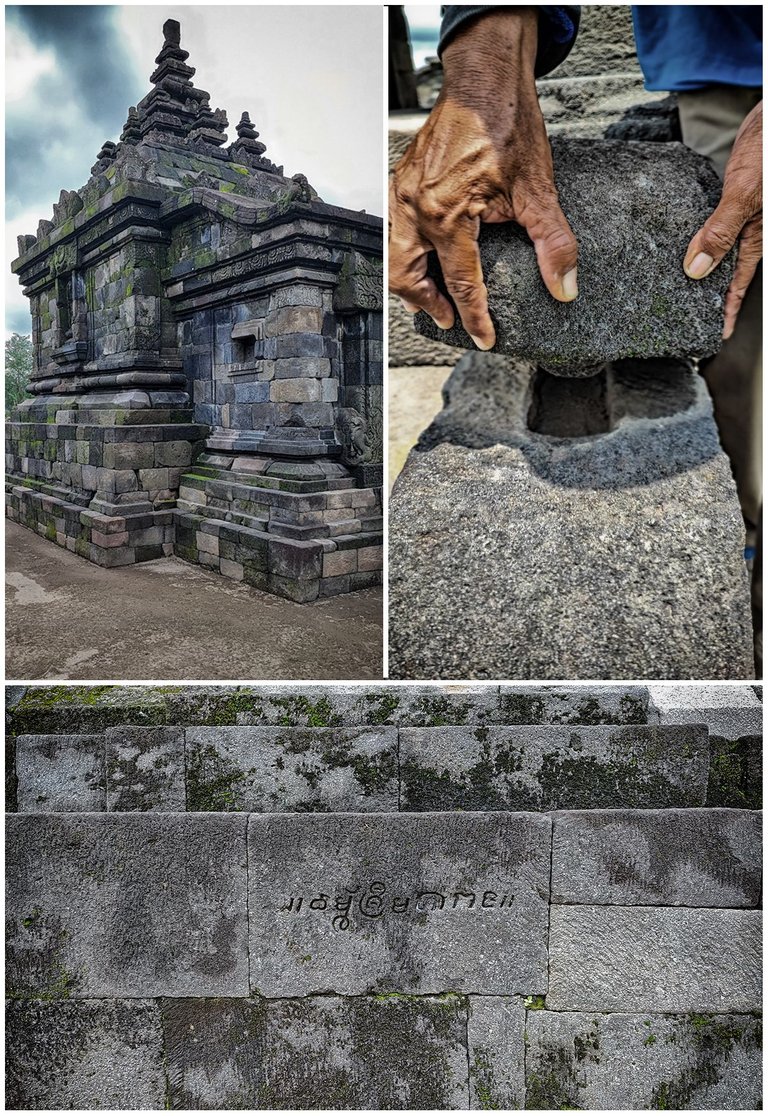
Each ancillary temple is an offering from a different area. This is indicated in the relief of ancient inscriptions on the outer walls of the ancillary temples which show who gave the ancillary temples.
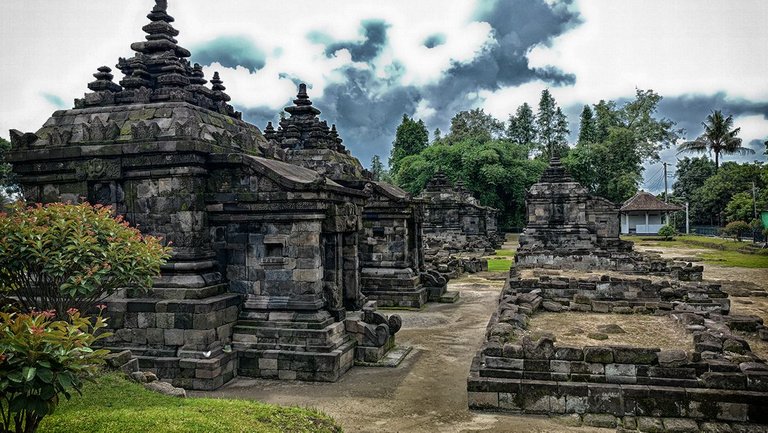
If you look closely at the shapes of the scattered temple stones, it seems that there are only square-shaped stones that make up the temple. The rocks with reliefs seem to have been stored elsewhere, given the open condition of the Plaosan Kidul complex. The room inside the temple is also empty, and if there is a statue, it will probably only be placed when the entire site has been restored, and security can be guaranteed.
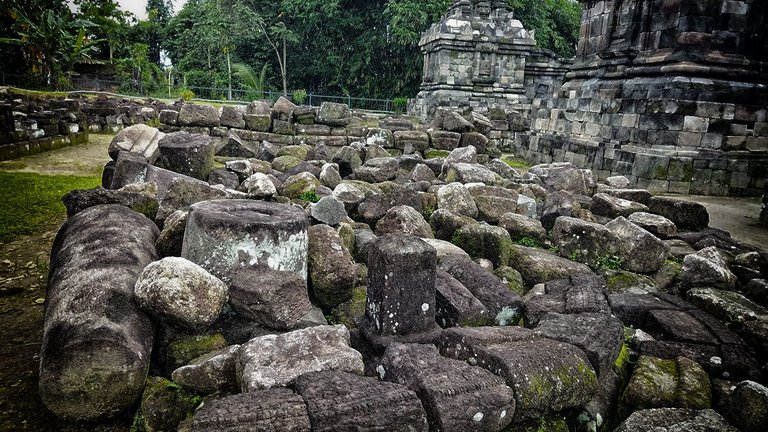
You only see the building blocks piled and scattered, valuable statues, stone panels that have reliefs, and inscriptions are stored safely in a warehouse.
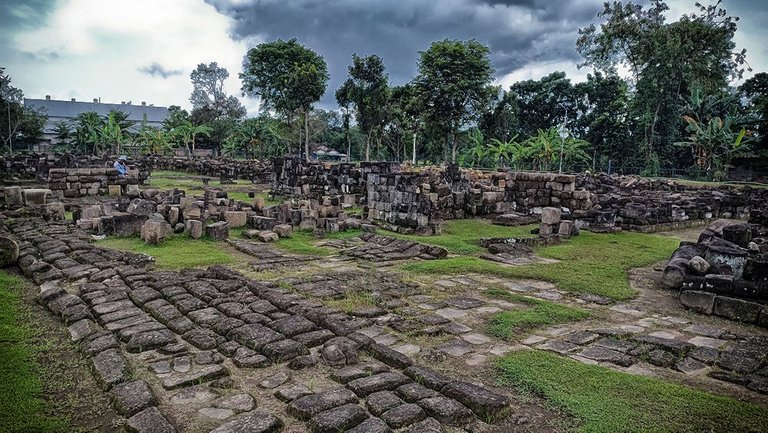
As you can see there were not many activities in the area. Everywhere you look, you see piles of temple rubbles.
We spent about two hours exploring the Plaosan North and South complexes. We spoke to the workers and caretakers of the temples and I could tell they are very committed and have dedicated their lifetime to restoring and maintaining the temple complex. They are very friendly, knowledgeable, and well-versed in temple history. One thing that is unfortunate is the lack of interest from the younger generation, making it difficult to find successors to continue the restoration works.
Reference:
Thank you for reading and for your support.
All images and/or videos in this post are created by me, otherwise, they will be specified. You can also support me by clicking this link or the image on the right. 🙂
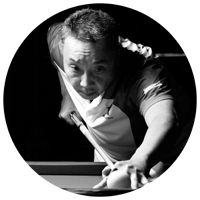 |
A baby boomer who's trying to embrace and adapt to the new digital world. Worked for over 30 years in the IT industry before retiring and now run an online vegetable delivery and hydroponics equipment business. Enjoy traveling, cooking, writing, playing pool, and all IT-related stuff. You're always welcome to leave a comment or feedback, and an upvote or reblog is also greatly appreciated. |

Congratulations, your post has been added to Pinmapple! 🎉🥳🍍
Did you know you have your own profile map?
And every post has their own map too!
Want to have your post on the map too?
https://twitter.com/1286231374291013633/status/1598932511593484288
The rewards earned on this comment will go directly to the people( @storiesoferne ) sharing the post on Twitter as long as they are registered with @poshtoken. Sign up at https://hiveposh.com.
My bad, overlooked this one. Please disregard this poshed content. Thanks.
Hi there, I'm from the Pinmapple team and I would have loved to curate this post. However, upon inspection I have found sections that are either spun or lifted from the internet. Both are forms of abuse and are not accepted on Pinmapple and Hive. If you need to reference the internet that's fine as you have done already, but please do not lift sections and insert them in your post to make it look like you have written it. If you need to quote something, then you need to provide the source after the text.
I am downvoting and muting this post so I can keep track of this issue and am treating this as a newbie mistake even though you have been on Hive for a while. You are welcome to continue post in Pinmapple in future but only if you create original content. Thanks
Your post:
Source:

https://www.javaheritagetour.com/plaosan-templetempleslocated/
Your post:
Source:

https://brill.com/display/book/9789004488397/B9789004488397_s021.xml
Your post:
Source:

https://www.visitklaten.com/article/plaosan-temple-complex/
My bad and apologies for not properly quoting some of the paragraphs. Won't happen again, and thanks for reminding me.🙏